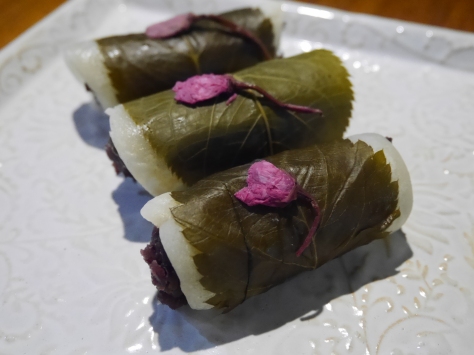Sakura-mochi – it’s something that I wanted to make before the sakura season ends. And finally, I did it last weekend! It’s literally a traditional Japanese dessert for the sakura season, using a pickled sakura leave which is edible. There are two kinds of sakura-mochi – one is Kansai (Western Japanese) style and the other is Kanto (Eastern Japanese) style. I made the Kanto one as it’s actually much easier than that of Kansai.
Ingredients: 200g anko (sweet red bean paste – please see this article for the recipe), 10 pickled sakura leaves, 10 pickled sakura blossoms (optional), 100g wheat flour (cake flour), 30g shiratamako (glutinous rice flour), 50g sugar, 200ml water.
Method:
- Soak pickled sakura leaves and blossoms in water to freshen. Then wipe off the moisture.
- Add wheat flour, shiratamako, sugar and water in a bowl and mix well.
- Heat a lightly oiled flying pan over low heat, pour 2 tbsp batter and spread it so it will become oval-shaped. Cook until heated and turn over, just like a crepe.
- Wrap anko with mochi and a sakura leave. Top with a sakura blossom if you like.



